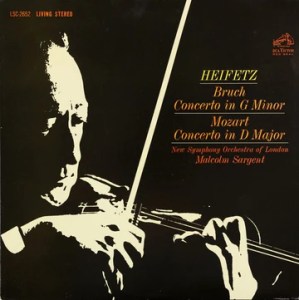 More of the Music of Wolfgang Amadeus Mozart (1756-1791)
More of the Music of Wolfgang Amadeus Mozart (1756-1791)
Reviews and Commentaries for the Music of Mozart
About fifteen years ago we really liked the original for this title with the rare cover you see pictured.
More recently we were able to acquire quite a variety of different pressings for an upcoming shootout and were fortunate to be able to include one of the stereo originals for the first time in many years. We started out with high hopes, but once it began playing, fairly quickly our hopes were dashed.
Our notes for the ori9inal pressing read:
- Overly rich and weighty
- Dynamics/life are gone.
- Side two has one of the most boomy sounding pianos I’ve ever heard.

In other words, it just sounded like an old record, and not a very good one at that. The world is full of them.
Only an old school audio system can hide the faults of a pressing such as this one. The world is full of those too, even though they might comprise all the latest and most expensive components.
Were we wrong years ago? Hard to say. That copy from many years ago is gone.
Three things we always keep in mind when a pressing doesn’t sound the way we remember it did, or think it should:
- Our standards are quite a bit higher now, having spent decades critically listening to vintage classical pressings by the hundreds.
- Our stereo is dramatically more revealing and more accurate than it used to be.
- Since no two records sound the same, maybe that one from long ago actually did sound as good as we thought at the time.
 There are a lot of DG recordings that have this kind of sound. We’ve played them by the score. Most went directly into the trade bin.
There are a lot of DG recordings that have this kind of sound. We’ve played them by the score. Most went directly into the trade bin.
We simply do not sell classical records with this kind of sound regardless of how good the performances may be.
Which brings up an assumption that many audiophiles make, especially those who spend time on forums whose members dispense advice about which pressings are most likely to have the best sound. We find such advice to be so often mistaken as to be almost worthless.
We lay out our thinking on the subject in this commentary:
The link below will take you to all the records that can sound better on the right reissue pressing, not the original:
Our Job
Our job is to find you good sounding pressings.
That’s the reason we carry:
- No Heavy Vinyl of any kind.
- Exactly one Half-Speed mastered title (John Klemmer’s Touch).
- Rarely any Japanese pressings, and
- Almost nothing made in the 21st century.
If these kinds of records sounded good compared to the vintage pressings we offer — in other words, if they performed well in shootouts — we would be happy to offer them to our customers.


 More Columbia Classical Recordings
More Columbia Classical Recordings



 No, the Japanese pressing, specifically targeted to audiophiles, or “soundphiles” if you like, is not superior to a properly mastered and pressed UK LP.
No, the Japanese pressing, specifically targeted to audiophiles, or “soundphiles” if you like, is not superior to a properly mastered and pressed UK LP.
